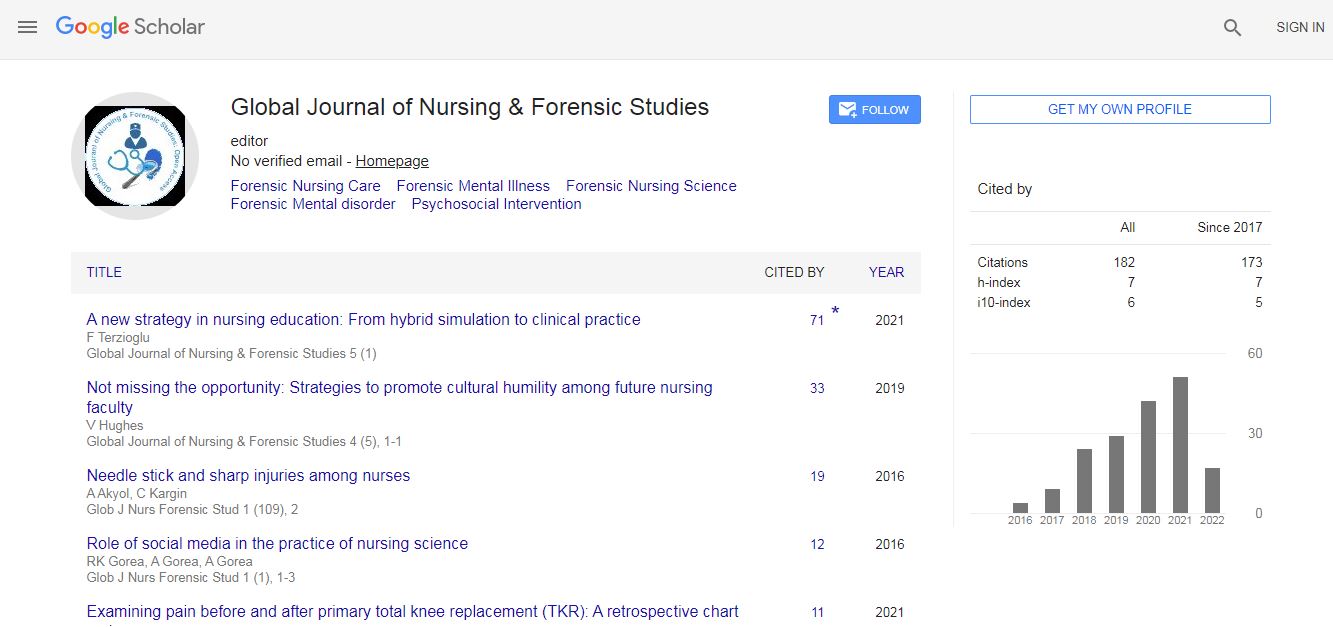Our Group organises 3000+ Global Events every year across USA, Europe & Asia with support from 1000 more scientific Societies and Publishes 700+ ������ Journals which contains over 50000 eminent personalities, reputed scientists as editorial board members.
������ Journals gaining more Readers and Citations
700 Journals and 15,000,000 Readers Each Journal is getting 25,000+ Readers
Citations : 82
Indexed In
- Google Scholar
- RefSeek
- Hamdard University
- EBSCO A-Z
- Euro Pub
- ICMJE
Useful Links
Recommended Journals
Related Subjects
Share This Page
Influence of mirabegron, adrenaline and ascorbic acid on the intensity of ironinduced biochemiluminescence of erythrocytes in whole blood in men
5th International Conference on Ophthalmology & Eye Surgery
NS Zavalin
Kirov State Medical University, Russia
ScientificTracks Abstracts: Optom ������
Abstract
Introduction: Obesity is the most common chronic disease today and methods for the prevention and treatment of obesity are an important area of modern medicine. Among the new directions it is proposed to use agonists of �?²3-Adrenergic Receptors (�?²3-AR), including mirabegron. The purpose of this study was to confirm the ability of mirabegron as a selective agonist of �?²3-AR (compared to ascorbic acid and adrenaline) to reduce the free radical activity of erythrocytes, which are known to lack mitochondria (the main sources of ROS), but are rich in lipids. Materials and Methods: The object of the study was heparinized venous blood of 20 male donors. The intensity of free radical activity was assessed by the iron-induced biochemiluminescence method on a biochemiluminometer BHL-07 manufactured by Medozons (Russia). We studied the background values of blood biochemiluminescence intensity (light sum S), which served as a control and evaluated the effect of the agonist �?²3-AR mirabegron, ascorbic acid as a classic antioxidant and adrenaline. Results: It has been established (Table 1) that mirabegron at a concentration of 10â�?�?6 g/mL of Krebs solution statistically significantly reduces the intensity of erythrocyte biochemiluminescence. A similar effect is exerted by the Classic antioxidant ascorbic acid (10â�?�?4 g/ mL), as well as adrenaline (10â�?�?5 g/mL). Table 1. Indicators S of free radical activity of whole blood of male donors under the action of ascorbic acid, adrenaline, mirabegron, in % of the background level. Adden dum 10-9 10-8 10-7 10-6 10-5 10-4 Whole blood 86A 92 88M 96 80* Vitamin C - (83;92) (89;97) (80;97) (26;101) (70;87) 95 108AA 101 101 94 Adrenalin (86;107) (102;113) (93;116) (88;111) (85;96) - 90*AA Mirabegron (84;94) - - Conclusion: This indicates the possibility and expediency of using mirabegron for the treatment of obesity in which the intensity of lipid peroxidation is increased.Biography
Zavalin NS is a lecturer at the Department of Physics and Medical Informatics at the Kirov State Medical University. He graduated from the Vyatka state university of Humanities in 2015, Specialty is medical physics. Then he completed his postgraduate studies at the Vyatka State University in the direction of human physiology in 2019.

